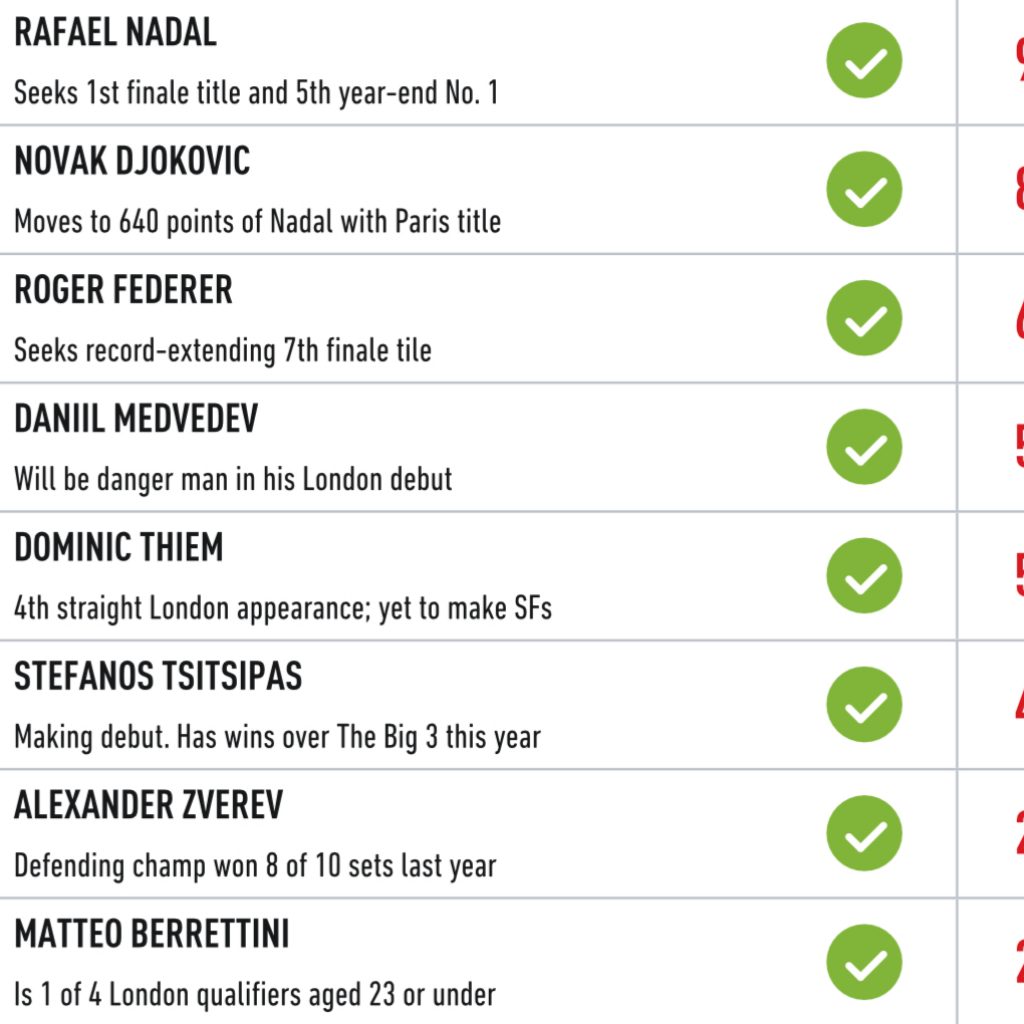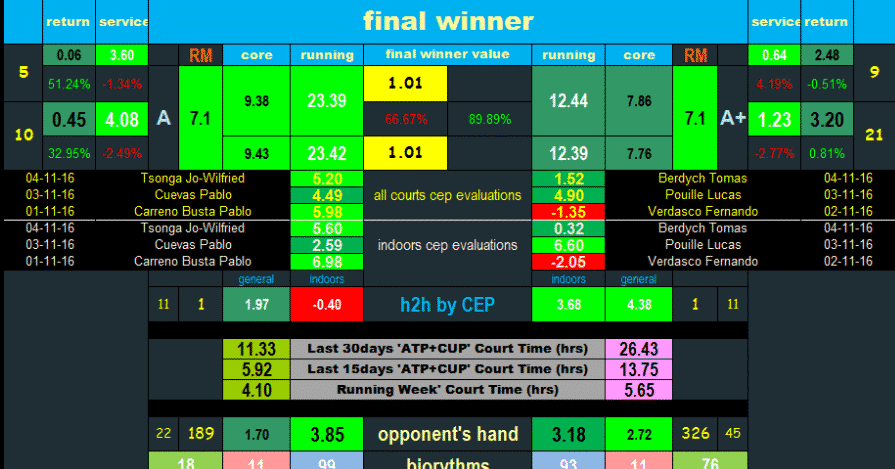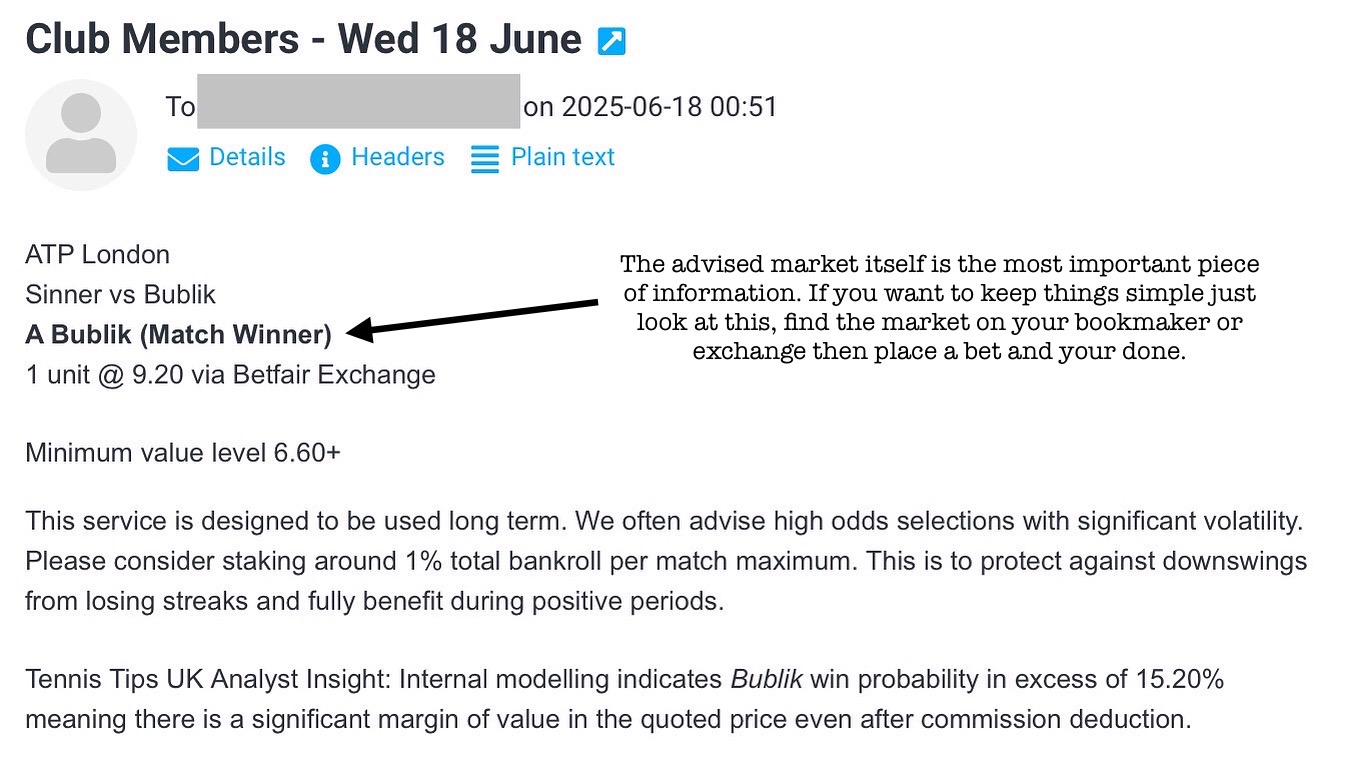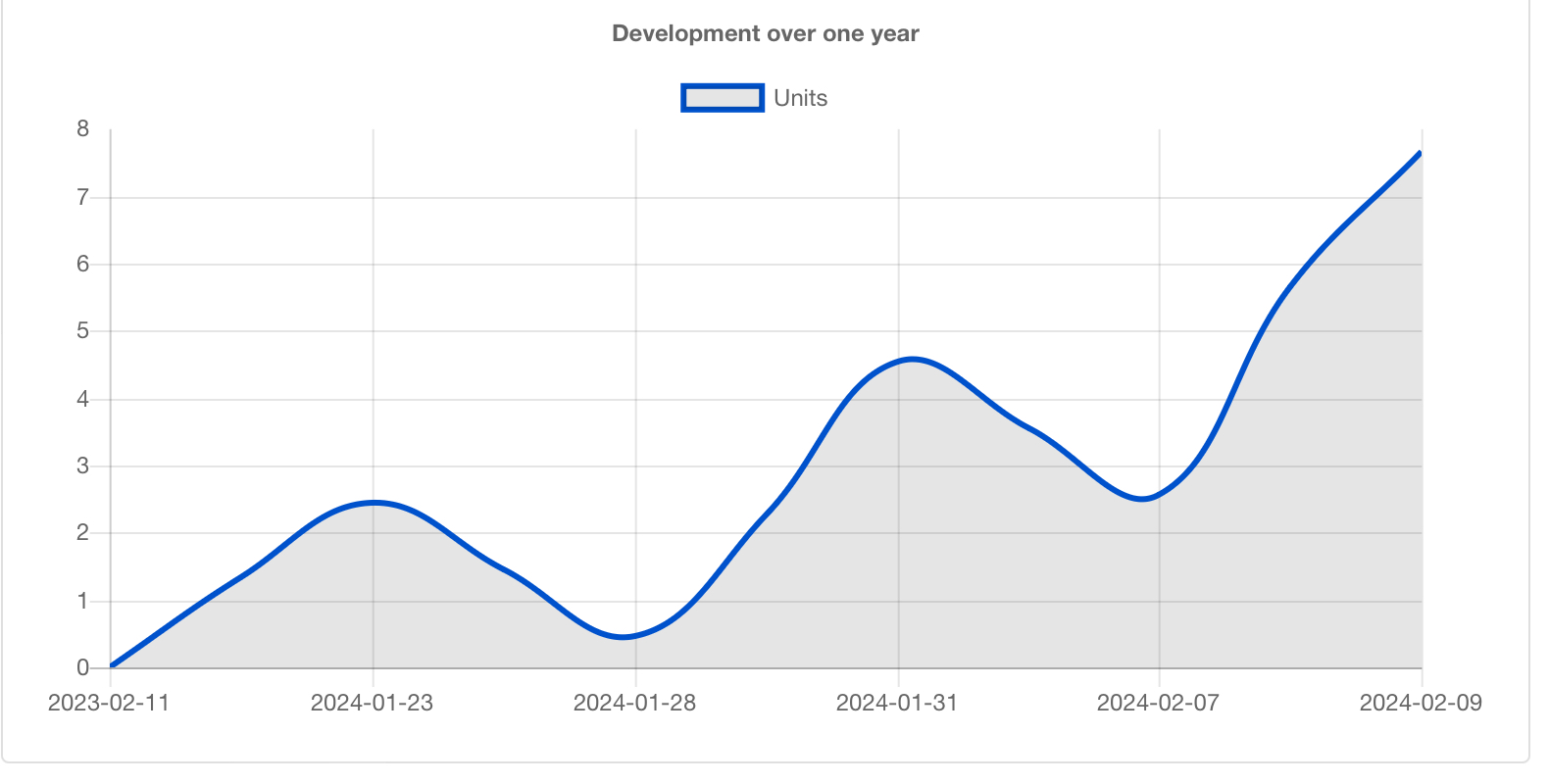Tennis Tips UK provides tennis betting picks focusing on ATP match winner markets to club members. They receive frequent emails direct to their inbox stating the advised bet with reasoning. This service has operated for over a decade and records all selections via the spreadsheet linked above for transparency. All that’s required is a bookmaker and/or exchange account. Synopsis of overall results provided below.
| Profit (units) | Yield (%) | Strike Rate (%) | Average Odds (Decimal) | Illustrative Return (£100 staked per pick) |
| +65.40 | 23.40 | 33.70 | 4.51 | £6540 from backing every selection as of July 2025 |
- ✅ WON @ 2.12 (+112) | J Duckworth | ATP Los Cabos£100 stake backing Duckworth to beat Mannarino returned £109.76 profit… Read more: ✅ WON @ 2.12 (+112) | J Duckworth | ATP Los Cabos
- ✅ WON @ 8.20 (+720) | A Magadan | ATP Los Cabos£100 stake backing Magadan to beat Lajal returned £705.60 profit… Read more: ✅ WON @ 8.20 (+720) | A Magadan | ATP Los Cabos
- ✅ WON @ 10.91 (+991) | T Baadi -1.5 | ATP Los Cabos£100 stake backing Baadi to beat Uchiyama in straight sets… Read more: ✅ WON @ 10.91 (+991) | T Baadi -1.5 | ATP Los Cabos
The 2019 iteration of the Nitto ATP Finals will once again be staged in London with a field of the expected names but also some new additions who have exceeded expectations and proved surprisingly consistent over the past year on the tour.
The Favourites: Federer, Nadal & Djokovic
Inevitably it’s still the established names that are the big draw for most fans however – Roger Federer, Rafael Nadal and Novak Djokovic have defied doomsday’s predictions regarding their impending demise and all comfortably qualified. It does beg the question though – how long can they maintain their level given that tennis is such as physical game. This question is particularly prevalent for the Swiss maestro as he approaches 39 years old. Most would have retired many years ago but his sheer, unparalleled talent has kept him at the top.

Analysing the Big Three’s record at the ATP Tour Finals
We analyse Roger Federer, Novak Djokovic and Rafael Nadal at the end-of-season event, including their head-to-heads and the impact of the conditions.
Roger Federer, Rafael Nadal and Novak Djokovic first all competed at the ATP World Tour Finals in 2007. Twelve years on, it’s possible that the 2019 edition of the tournament will be the last one to feature all three of tennis’ greatest players.
The trio have played 16 matches and 32 sets against each other at the season-ending event. Between them, they have delivered 11 titles, and helped to transform the tournament from an end-of-season hit into one of the sport’s most prestigious titles.
We broke down their head-to-head numbers and analysed whether they have dominated the Tour Finals like they dominate grand slams.
HEAD-TO-HEAD
Federer, the oldest of the trio, had three attempts at winning the ATP Tour Finals (winning twice) before either Djokovic or Nadal were involved, so it is no surprise the Swiss has won it most often.
The 38-year-old has played this event 14 times overall, winning on six of those attempts (42.9 per cent).
Djokovic’s numbers are even better, winning the title on five of 11 attempts (45.5 percent).
All of those victories came when Federer was competing, though Nadal only featured in two of them.
Nadal, surprisingly, has not won the event in eight attempts, although he has never competed in one when either of the other two have been missing.
Federer has won three of the six Tour Finals that the trio have all played in, with Nikolay Davydenko winning the other in 2009.
Djokovic’s head-to-head record stacks up for individual matches as well.
The Serb leads Federer 4-2 in match-ups at this event, though one of those was the 2014 final when the Swiss pulled out beforehand because of injury.
Djokovic also beats Nadal on head-to-head, 3-2 in this instance, and has won both of their meetings since 2010.
Taking all of this into account, Djokovic should be considered the greatest of the three in the Tour Finals.
CONDITIONS
Djokovic also boasts a superior head-to-head record against both Federer and Nadal in hard-court majors, suggesting that suitability to the surface is the biggest deciding factor in winning the Tour Finals.
The Serb leads Federer 6-4 in head-to-heads at the US Open and Australian Open combined, and is beating Nadal 3-2 across the same events.
The impact of the Tour Finals being an indoor tournament is proved by Federer’s head-to-head record against Nadal, though.
The Swiss is renowned for his indoor record. The lack of wind ensures that conditions remain consistent, so hitting through the line of the ball and hand-eye co-ordination are attributes that flourish.
It explains why he is trailing 3-1 to Nadal in hard-court majors but beating him 4-1 in the Tour Finals.
It also seems that Nadal, who has also struggled with injuries most of the three, is the one most affected by the Tour Finals being an end-of-season event.
The Spaniard suffers from a disorder called Kohler’s feet – an irregularity in growth and development of the tarsal navicular bone in the foot – as well as suffering from chronic knee issues. He also underwent ankle surgery in November 2018.
At the end of a long season, those issues are exacerbated. That explains why he has only competed in eight Tour Finals – Federer has played in 14 and Djokovic in 11 – and not won any of them.
DOMINATION
The domination that Federer and Djokovic have enjoyed in this competition since 2003 is shown by comparing it to the 16 years beforehand.
In the period between 2003-2018, just seven players won the Tour finals, with David Nalbandian, Davydenko, Andy Murray, Grigor Dimitrov and Alexander Zverev winning one each.
Federer and Djokovic’s superiority was even more impressive after the 2015 edition, when they had won 11 of the last 13 available titles.
In the previous 16 years between 1987-2002, there were nine different champions. Pete Sampras won it five times, but defended it just once, while Boris Becker won three of them.
Four players won it in five years between 1998-2002, but it took another seven years for another four – Federer, David Nalbandian, Djokovic and Davydenko – to lift the title.
TRIVIA
Whether the Tour Finals should always be played on an indoor hard court is a regular source of debate.
The last time that the event wasn’t played on hard court was in 1974, but the question intensified in 2013 when Federer and Nadal went public in their disagreement on the issue.
Nadal – whose favourite surface is clay – challenged the status quo, saying: “A good player has a chance to qualify for the Tour Finals four or five times in his career.
“If during this four years you have a different surface every year, a minimum one time he will have the chance to play on his favourite surface”.
There are clear drawbacks to the plan. Players would have to immediately acclimatise to clay after months of playing on a hard court and there are challenges with the climate, but it would probably be fairer for everybody.
Federer – an indoor, hard-court specialist – went the other way.
“I just feel indoors doesn’t have enough play,” he said. “The indoor season is small. I believe indoors deserves a huge event, which this one is.”
Indoor courts don’t have feelings, Roger, but ticket-holders for the 2014 final did.
Federer pulled out of that match against Djokovic with a back injury, apologising in person to the crowd at the O2 Arena.
“I’m sorry I’m not fit to play,” he said. “I did everything I could. I took pain-killers, had rest until the very end, but I just cannot compete at this level with Novak.
“At my age it would have been a risk.”
So it was a surprise to see Federer representing Switzerland at the Davis Cup just five days later, playing six singles sets and three doubles sets in three days to help them win the competition for the first time.
Murray rushed to the O2 to replace Federer and take on Djokovic in an exhibition set for the crowd that Sunday, and was rewarded by the tennis gods when he ended the trio’s monopoly on the No. 1 world ranking just before the Tour Finals two years later.
The Scot was already top of the pile heading to London, but would have surrendered the position had he lost the final against Djokovic.
A two-set victory ensured that he ended 2016 officially as the best player in the world, although all three of Federer, Nadal and Djokovic have since reclaimed the crown.
The Full Field | New Names Rise in 2019
The aforementioned ‘usual suspects’ make up the majority of the lineup but there are new names that post a credible threat. Danil Medvedev is a key contender – showing remarkable consistency throughout the season. Another young gun in the form of Matteo Berrettini is also a powerful, dangerous player. Both are particularly effective on indoor hard courts and their respective odds reflect this despite it being their debut. The infographic was used courtesy of Betway Online Tennis.

The Official Ranking for ATP Finals Qualification. Nadal, Federer and Djokovic lead the way. Source
What is the purpose of club membership?
Most members use the advisory to generate profits via bookmaker and/or exchange accounts. For someone staking £100 per match this has yielded thousands in profit even once the annual membership fee is deducted.
Will bookmakers limit my account(s)?
Most likely, yes. Club bets have a proven track record of value (+ EV) and bookmakers are likely to notice this. Short term you’ll be fine but longer term we suggest using betting exchanges or ‘winners welcome’ bookmakers or brokers. That’s why we always quote and record odds from Betfair Exchange or Pinnacle for members as that illustrates profits for those who are limited elsewhere.
How will it work after joining?
Your membership will be confirmed with a personal welcome email. You’ll get one month of access per payment. You should expect an average of two emails per week detailing the advised selection, match, tournament and odds. Simply login to your betting account and place a wager on the selected market. We only use standard match winner bets, often referred to as the moneyline, and set handicap markets so coverage is extensive at virtually all betting portals. Have any questions? Please visit the contact us page. Average response time 24h.
Is club membership limited?
Yes, we allow a maximum of ten members to have an active memberships at any one time. This is to preserve value and market liquidity. Essentially ensuring it’s practical to obtain the advised odds without them disappearing too quickly.
What bankroll is required?
We suggest £10,000 or more ideally although smaller can work. Most members choose to follow our advice of staking 1% per match. This means it automatically adjusts and scales as the total grows and compounds returns. In the above example; the member would have yielded over £3,000 profit but had to pay the membership fee leaving them with a net profit in excess of £2200. Some members have vastly exceeded this by staking higher amounts but please remember to have a long term focus and ensure capacity for successive losses.
What type of bets should I expect?
Always match winner (moneyline) bets covering men’s professional tennis. This includes ATP events, Challenger and Grand Slams. We specialise in high odds underdogs which have yielded the most considerable profits in extensive back testing. Tennis betting picks in the 5.00-10.00 odds range are common with a minimum level of EVENS (2.00). We deliver advisory emails at a consistent time with a minimum of six hours before the scheduled start time to ensure plenty of time to get bets placed.
Who is the club open to?
Everyone with a decent bankroll and a long term outlook. We have members from around the world betting in many different currencies and jurisdictions. Tennis Tips UK are based in the United Kingdom, hence the name, but the club is truly global. Please note while the default currency is pounds – the checkout page also permits dollars or euros. These should be presented as an option or automatically switched based on your location. It’s also possible to pay in other currencies using the exchange rate for that day.
How is profit tracked?
For transparency we operate a public spreadsheet. This shows all key metrics such as units profit, ROI, yield and strike rate. We even monitor the Avg Diff CO % for those statisticians amongst you. In a nutshell this measures the implied value by comparing the advised odds with the sharp closing line. 2% is deducted from all recorded profit figures to simulate exchange commission. Just to clarify bets are only added to the spreadsheet post result confirmation to retain exclusivity of access to paid club members.
For winning bets our team also publish profit reports which feature the original email sent to members for additional tracking and verification purposes. This also includes a rating for that specific prediction which gives an insight into how our strategy is optimised over time.
Who picks the bets for club members?
Tennis Tips UK have grown into a small team over the years. Founded way back in 2013 by an odds compiler at a leading EU bookmaker. Since then joined by a quant and business manager. Each one of us lives and breathes tennis but we like to let our results speak for themselves rather than make outlandish personal claims.
Why don’t you bet on your own picks if they are so good?
We do, frequently. The issue surrounds liquidity and limitations. Club members have access to a wide range of liquidity from global sportsbooks and exchanges. We, as individuals, are far more restricted. Typically though we still stake an average of £10k per week on our selections but unfortunately virtually every bookmaker has long since banned us. We should take it a compliment really as a limitation is an endorsement of the profitability of your bets from an often billion pound institution.
Is there a way to reduce the cost of membership?
The fee is set at a level which allows us to fill membership places. If you are a prospective first time club member enter the promo code ‘NEWCLUB10’ during checkout to reduce the cost. Please note this is a one time discount and not available for returning members.
Since 2013 we have actively built, deployed, maintained and optimised a tennis betting data model. This serves as the foundation of our team’s analysis. We don’t rely on it entirely but it gives a reliable indication as to where the price for a specific player should be. Significant discrepancies between this and actual live market prices across bookmakers and exchanges often flag our attention for further research.
No. When a specific bet is advised our team are stating there is value in the quoted odds. In other words the true probability of that outcome is higher than the implied figure derived from market odds. Long term backing these bets consistently will deliver considerable profit as our results illustrate. However members should be prepared to lose successive bets frequently as the club focuses on significant underdogs. Sometimes a large percentage of annual returns can come from a single selection.
This is one of the key reasons that the club is now so focused on long term members and making that clear upfront. It was very frustrating to see some join for just a few weeks, lose bets then leave. This benefits nobody. New members should adopt a disciplined bankroll management strategy. The most common is simply staking 1% total bankroll per match. If a handful of consecutive losses would cause terminal bankroll damage then stakes need reducing.
This was a real email sent to club members. It may look a little intimidating initially but the selection in bold is the only essential piece of information to profit. We operate a simple staking strategy of 1 unit = 1% total bankroll. Each email consists of the tournament, match, selection, advised stake, minimum odds and projected win probability. This format will always be followed for consistency. 
No – you can leave at any time. When you take out a subscription this grants 30 days of email betting tips. Once this has expired it will automatically renew on a monthly basis. However you are always in control. Tennis Tips UK have setup a customer portal with our payment provider. This lets members manage their subscription at any time. So you can update payment methods or cancel entirely without any input needed from our end. We even send a reminder for every upcoming payment confirming the amount and date so no nasty surprises. We aim to be transparent and put you in complete control. Please see the terms and conditions page for more information.
Discover more from TENNIS TIPS UK
Subscribe to get the latest posts sent to your email.








